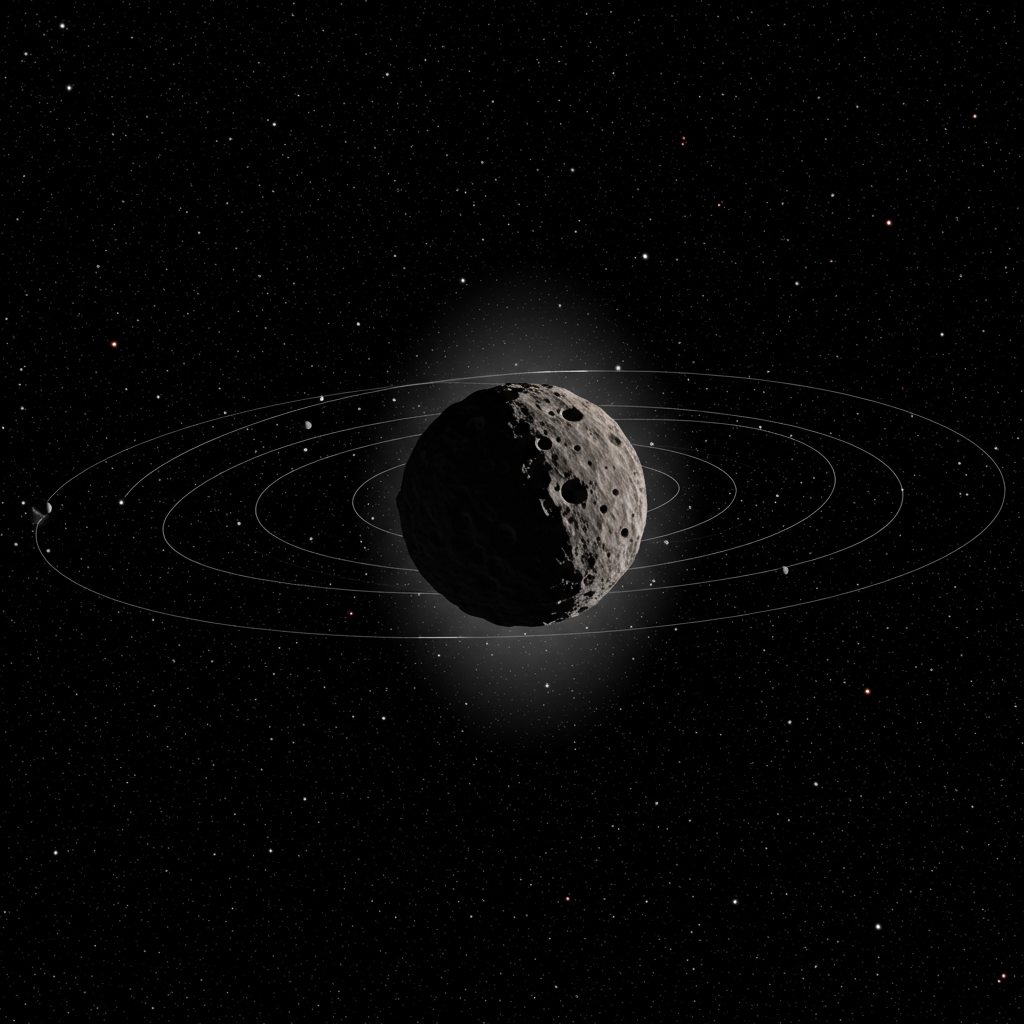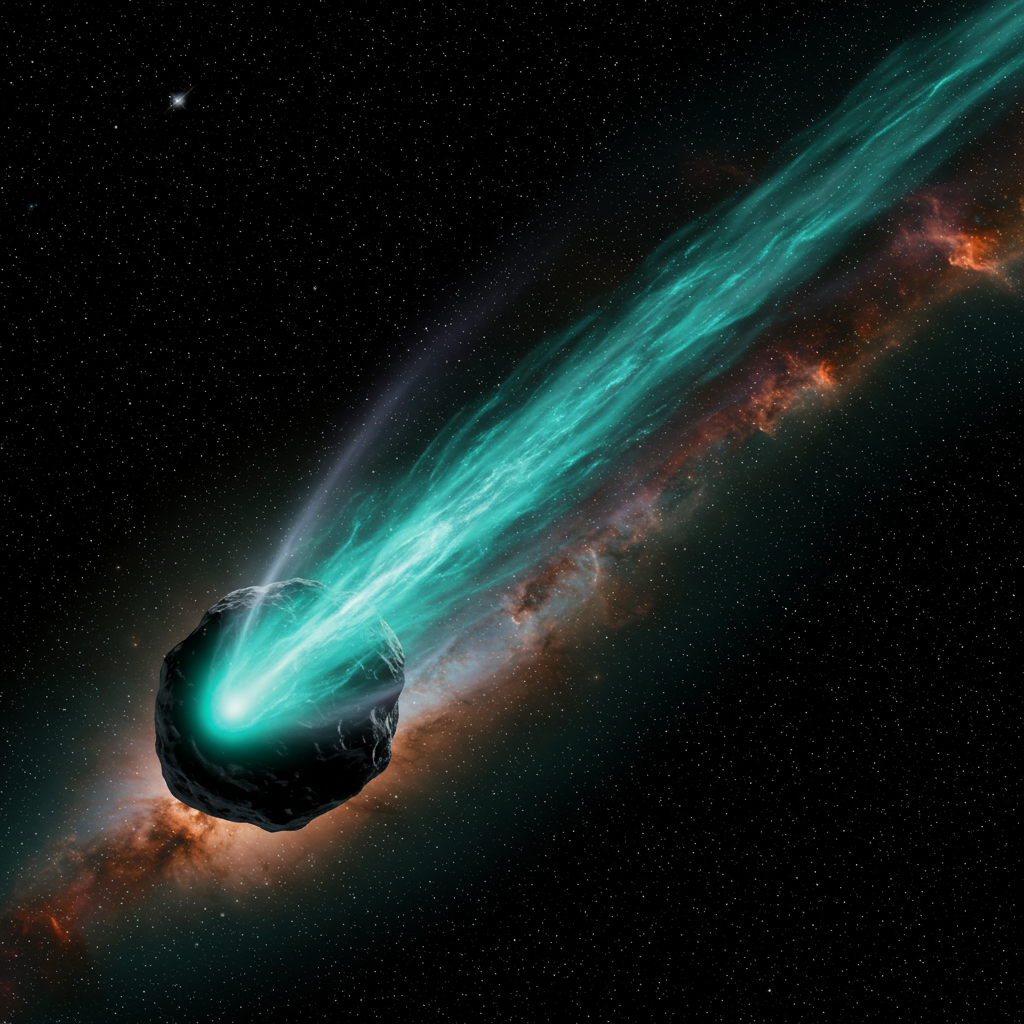Imagine a celestial event so rare it hasn’t happened in 5,000 years. Researchers are now watching an asteroid that could deliver just such an impact – not to Earth, but our nearest neighbor, the Moon. While the dramatic possibility of a giant asteroid smashing into the lunar surface in 2032 sounds like science fiction, scientists are studying its potential consequences, which range from a spectacular sky show for Earthlings to a concerning hazard for satellites and spacecraft in orbit.
The object in question, asteroid 2024 YR4, is estimated to be between 53 and 67 metres (about 174-220ft) wide – roughly the size of a 10-story building. Initially flagged as a potential “city killer” with a small chance of hitting Earth, subsequent observations, including refined data from the powerful James Webb Space Telescope, have drastically reduced the Earth impact probability to a negligible figure.
However, the focus has shifted. The latest data indicates a notable 4.3% chance that asteroid 2024 YR4 could collide with the Moon on December 22, 2032.
Simulating the Lunar Impact
A recent study by researchers from Canadian universities has simulated this potential lunar impact scenario. Though not yet peer-reviewed, the findings offer a detailed look at what could unfold:
Massive Crater: The collision, occurring at speeds exceeding 29,000 mph, could carve a crater roughly 1 kilometre (0.6 miles) in diameter into the Moon’s surface.
Immense Energy: The energy released by the impact would be “comparable to a large nuclear explosion,” according to Dr. Paul Wiegert of the University of Western Ontario, a lead author on the study.
Debris Cloud: Millions of kilograms, potentially up to 10,000 tonnes, of lunar material would be blasted upwards and outward from the Moon’s low gravity.
If this impact occurs, it would statistically be the largest lunar impact event in approximately 5,000 years, making it a truly historic occurrence.
Consequences Back on Earth (and in Orbit)
While a lunar impact poses no direct threat to humans on the ground – scientists confirm any resulting debris reaching Earth would likely burn up harmlessly in our dense atmosphere – it presents significant risks for our space infrastructure and promises a dazzling visual treat.
A Spectacular Meteor Shower: A portion of the ejected lunar debris would be captured by Earth’s gravitational pull. As these millimetre- to centimetre-sized rocks, travelling at tens of thousands of metres per second (likened to a bullet), enter our atmosphere days later, they could create an “eye-catching” and rare meteor shower, potentially far more vivid than typical showers.
Hazard to Satellites: This is the primary concern. Simulations suggest that between 10% and 30% of the ejected material could enter Earth’s orbit. This would dramatically increase the density of fast-moving particles, potentially boosting impact rates for orbiting objects by 10 to 1,000 times above normal levels. This heightened bombardment could damage or disable numerous satellites, including large constellations like SpaceX’s Starlink, risking “hundreds to thousands” of micro-impacts. Widespread satellite failures could disrupt critical communication networks and GPS services.
Risk to Lunar Missions & Astronauts: The potential debris field extends beyond Earth orbit. Future lunar missions, including NASA’s Artemis program and the planned Lunar Gateway space station, could face hazards. Astronauts, rovers, and landers on or near the Moon might be exposed to debris travelling at lethal speeds. Even small particles could damage equipment or pierce space suits, while larger fragments could breach spacecraft interiors.
Experts emphasize that managing the potential failure of multiple satellites simultaneously is a complex challenge, highlighting the need for proactive strategies like enhanced shielding technologies.
Planetary Defense in a Broader Context
This scenario underscores the evolving nature of planetary defense. While space agencies like NASA have long focused on tracking asteroids that could directly threaten Earth and developing deflection methods (like the successful 2022 DART mission which altered an asteroid’s orbit), the potential 2024 YR4 impact highlights the need to consider threats to critical infrastructure far from our planet’s surface.
The experience with asteroid 2024 YR4 has already served as a valuable “training exercise,” demonstrating how global monitoring systems respond to potentially hazardous objects. Countries like China are also increasing their focus on planetary defense, including recruiting talent for asteroid monitoring and planning future deflection missions.
What’s Next?
Asteroid 2024 YR4 currently orbits the sun and is too distant for detailed observation. Scientists anticipate it will become visible again in 2028. This close pass will provide a crucial opportunity to gather more data, refine its orbital path, and better understand its physical characteristics, allowing for more precise predictions about the likelihood and nature of a potential 2032 lunar collision. While the possibility of this rare impact event and its consequences remain, continuous monitoring is key to preparing for whatever the future holds for this intriguing space rock.




